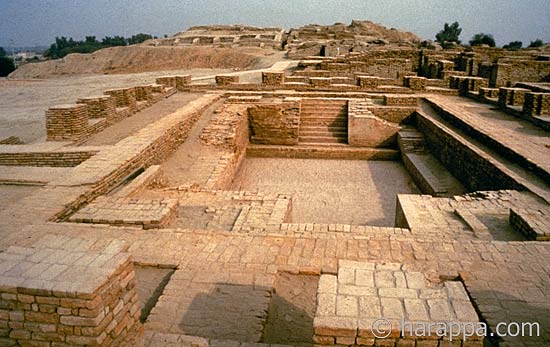
This is a placeholder text
Group text
by vk4gsd on 30 March 2014 - 00:03
by beetree on 30 March 2014 - 00:03

Carry On!
by GSD Lineage on 30 March 2014 - 02:03

The historians acheologist and geologist are still debating...

by Shtal on 30 March 2014 - 02:03
by vk4gsd on 30 March 2014 - 03:03
Since the surface area of Earth is approximately 200 million square miles, and the height of Mt Everest is approximately 5.5 miles, the amount of water that needed to be supplied (and disposed of) in the Great Flood is about 1.1 billion cubic miles.
The atmosphere today is only capable of holding the equivalent of one inch of precipitation (over the entire world) in the form of water vapor. The amount of rain per second that would be falling to generate 1.1 billion cubic miles of water over 40 days is almost unimaginable, the equivalent to 289 cubic miles per second. While rain is one possible source, the Bible also the "fountains of the great deep" as found in Genesis 7:11-12. This has given rise to the whole flood geology area of hydroplate theory and the aptly named lunar bukkake theory, which has attempted to replace rain almost entirely with water from underground.
and just what some cultures were doing around the time of the flood all of which answersingensis deny and say is a conspiracy -
Mesopotamia

Sargon the Great
It must have come as a real shock to Noah and his children when, in 2334 BC – only 14 years after the flood – Sargon the Great began establishing the powerful Akkadian empire. This task involved defeating in battle a variety of Sumerian city states, some of which had populations in excess of 100,000 inhabitants (e.g. Lagash and Uruk). By the end of his reign (2279 BC), Sargon’s vast empire stretched from the Mediterranean to the Persian Gulf – basically the entire Fertile Crescent.
Such an empire only 69 years after the Flood is a feat indeed. But the real credit has to go to the four women on Noah’s ark. “Barefoot and pregnant” doesn’t begin to describe the work involved in repopulating the planet at the pace necessary to give Sargon armies to fight and people to rule.
Egypt
Down in Egypt, the United Kingdom established by Menes circa. 3000 BC was humming along nicely. By the time of Noah’s flood, the Egyptians were just wrapping up their 5th dynasty. Pharaoh Unas was, no doubt, quite perturbed to see his empire underwater, especially since he was in the middle of building a pyramid complex at Saqqara, which you can visit to this day.

inside Teti's pyramid
Undeterred, the now soggy Egyptians moved seamlessly into the 6th dynasty with Pharaoh Teti at the helm. Teti built himself a nice pyramid complex too. Given that Teti came to power only 3 years after the global population was reduced to 8, you might have thought cheap labor for pyramid building would be hard to come by. Nonetheless, even Teti’s high court officials were building themselves massive funerary monuments during his reign.
Indus Valley

ruins of a bath in the Harappan city of Mohenjo-daro
By the time of the Flood, the vast Indus Valley Civilization had been in existence for about a millennium. It was now at its zenith in the period known as the Mature Harappan Period (beginning in 2600 BC). We don’t know as much about the Harappan culture because we still haven’t interpreted their script. But the archaeological record evidences large cities, hundreds of settlements, impressive architecture, and a rich material culture.
What we can say with confidence is that the Harappan were excellent swimmers. Their population managed to tread water for the entire year of Noah’s flood, allowing their civilization to continue uninterrupted for another 4 centuries before a gradual decline from 1900 to 1700 BC.
I could go on. In fact, it’s hard to pick a spot on the globe that didn’t have some form of continuous civilization both before and after 2348 BC.
The problem gets even worse for AiG because they take the Tower of Babel story as literal history as well, which forces them to push the beginning of all civilizations another 100+ years into the future to 2200 BC.
I’m not sure if it’s hilarious or just plain sad to see them teaching good Christian folk that Egypt was founded in 2188 BC. For reference, this date falls at the tail end of the 6th dynasty, after the entire Early Dynastic and Old Kingdom periods. That’s 1000 years of Egyptian history swept under the rug. 2188 BC is also 3-400 years after construction of the Great Pyramids and Sphinx of Giza. I guess they were built by aliens after all.
Insistence on a literal global deluge is a cardinal doctrine among most young earth creationists (YECs). YEC claims are regularly challenged on scientific grounds. This is to be expected when your theory defies modern geology, biology, paleontology, physics, astronomy, and genetics. Less frequently do we hear YEC claims held up for comparison against history. But there too, the YEC must continually dismiss the conclusions of professional historians, archaeologists and anthropologists, choosing instead to construct yet another alternate version of reality.
Contact information Disclaimer Privacy Statement Copyright Information Terms of Service Cookie policy ↑ Back to top




